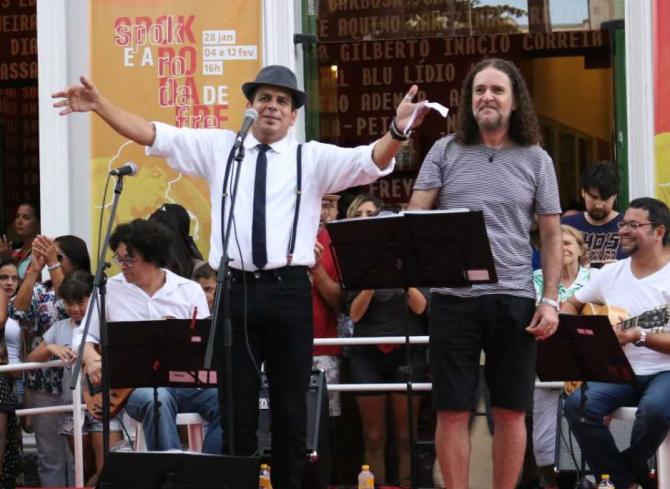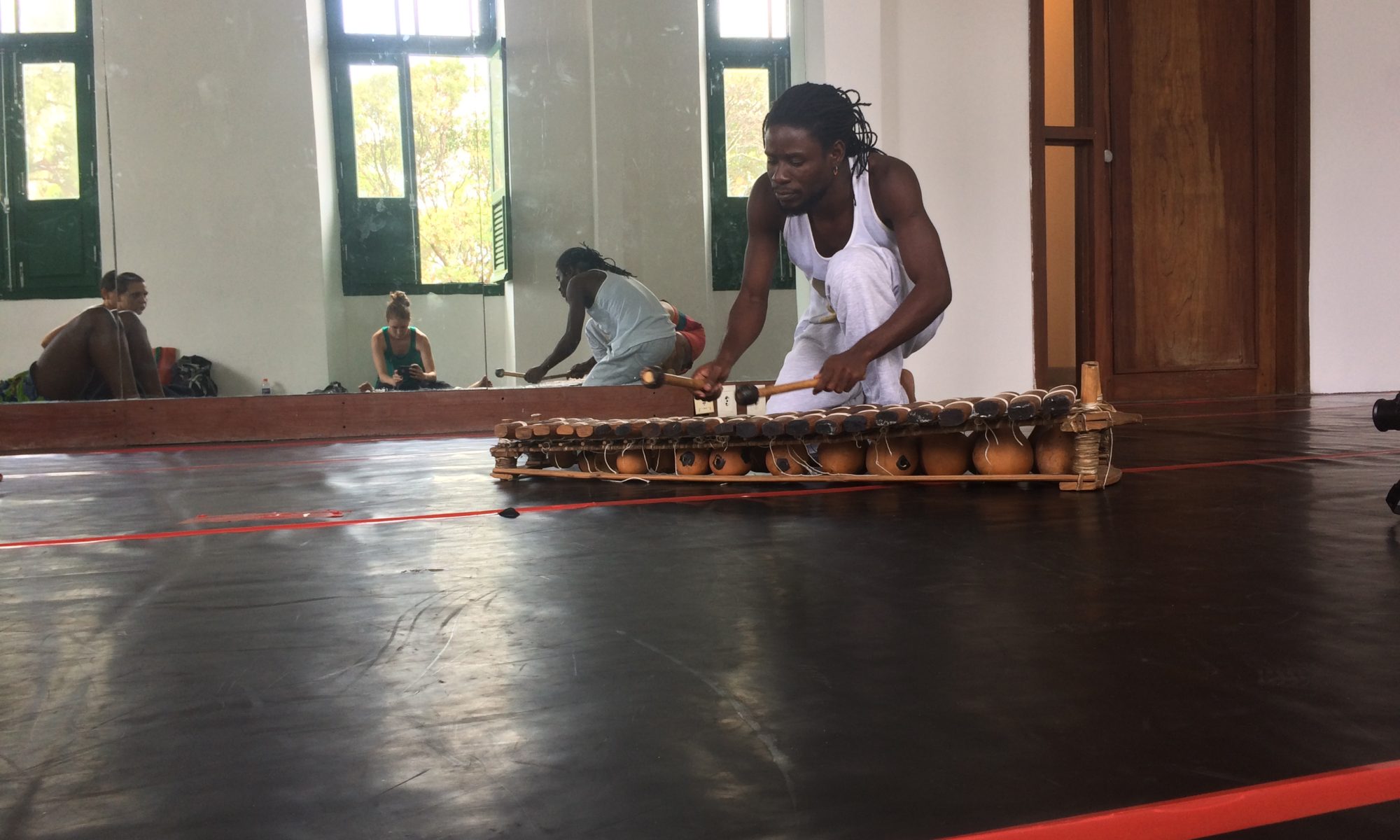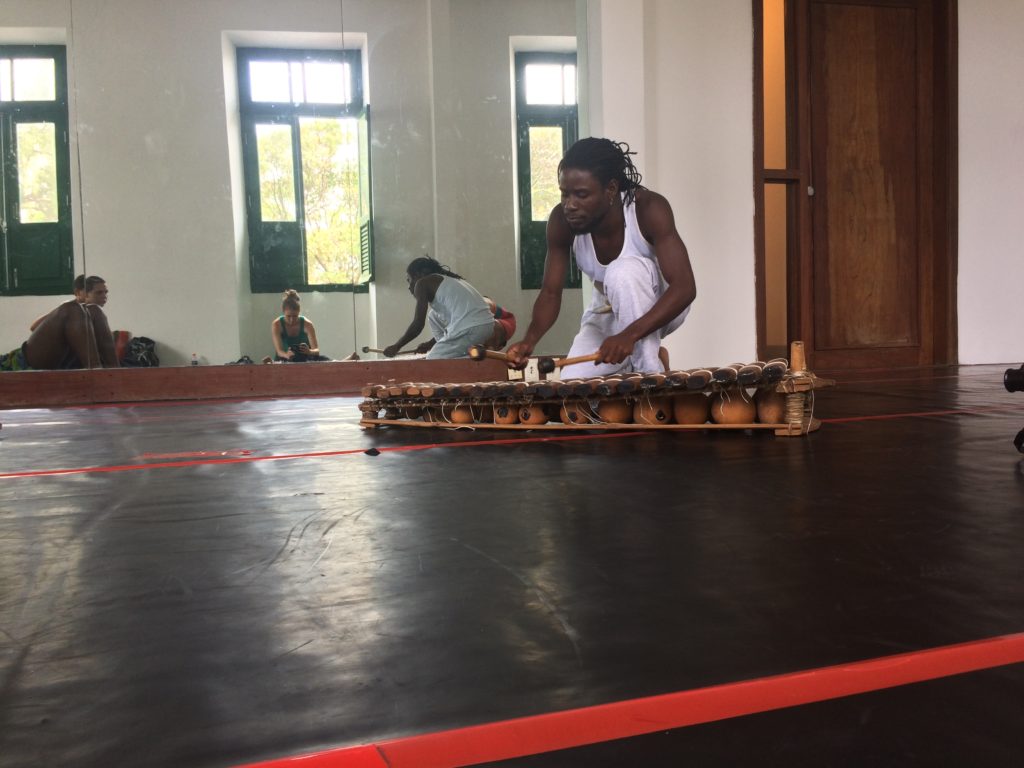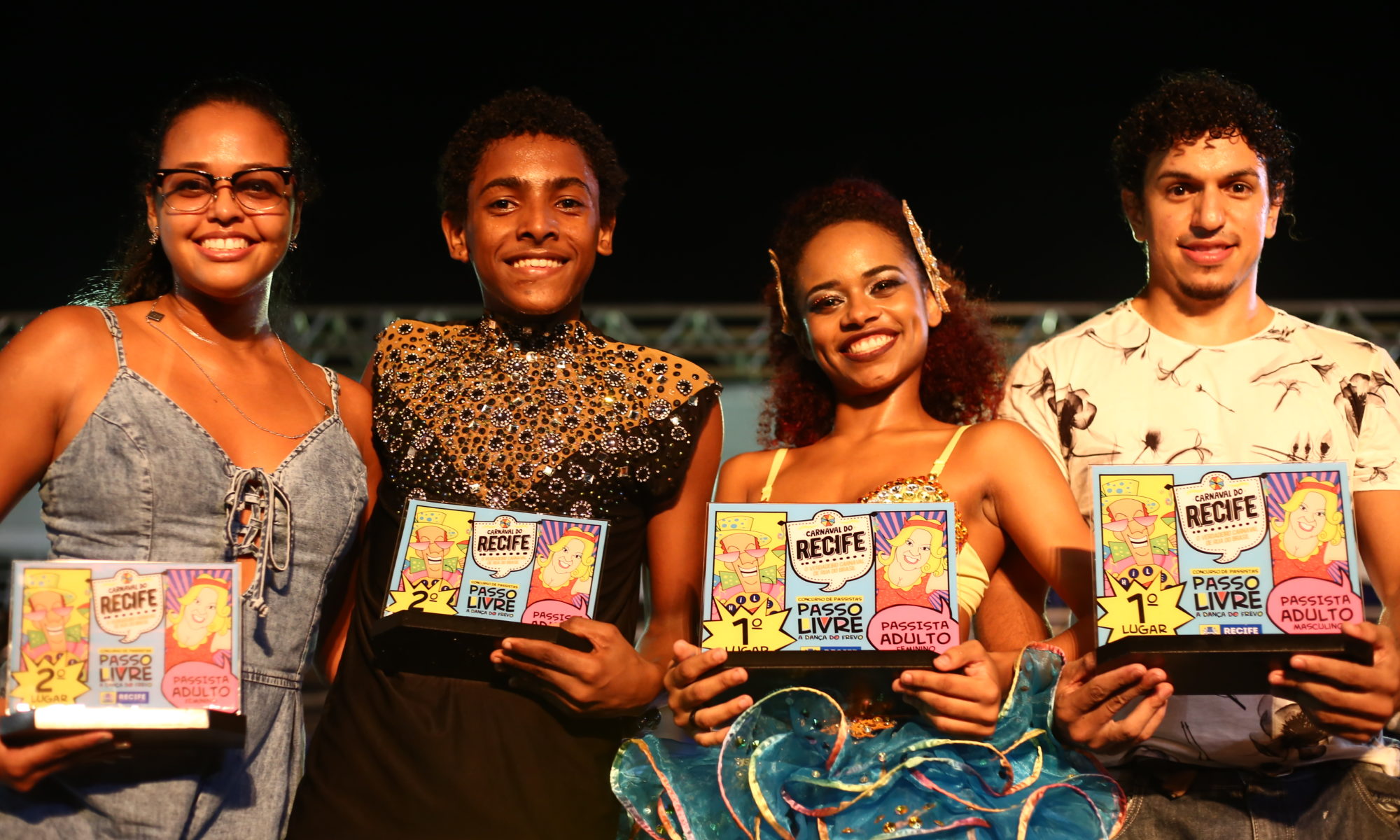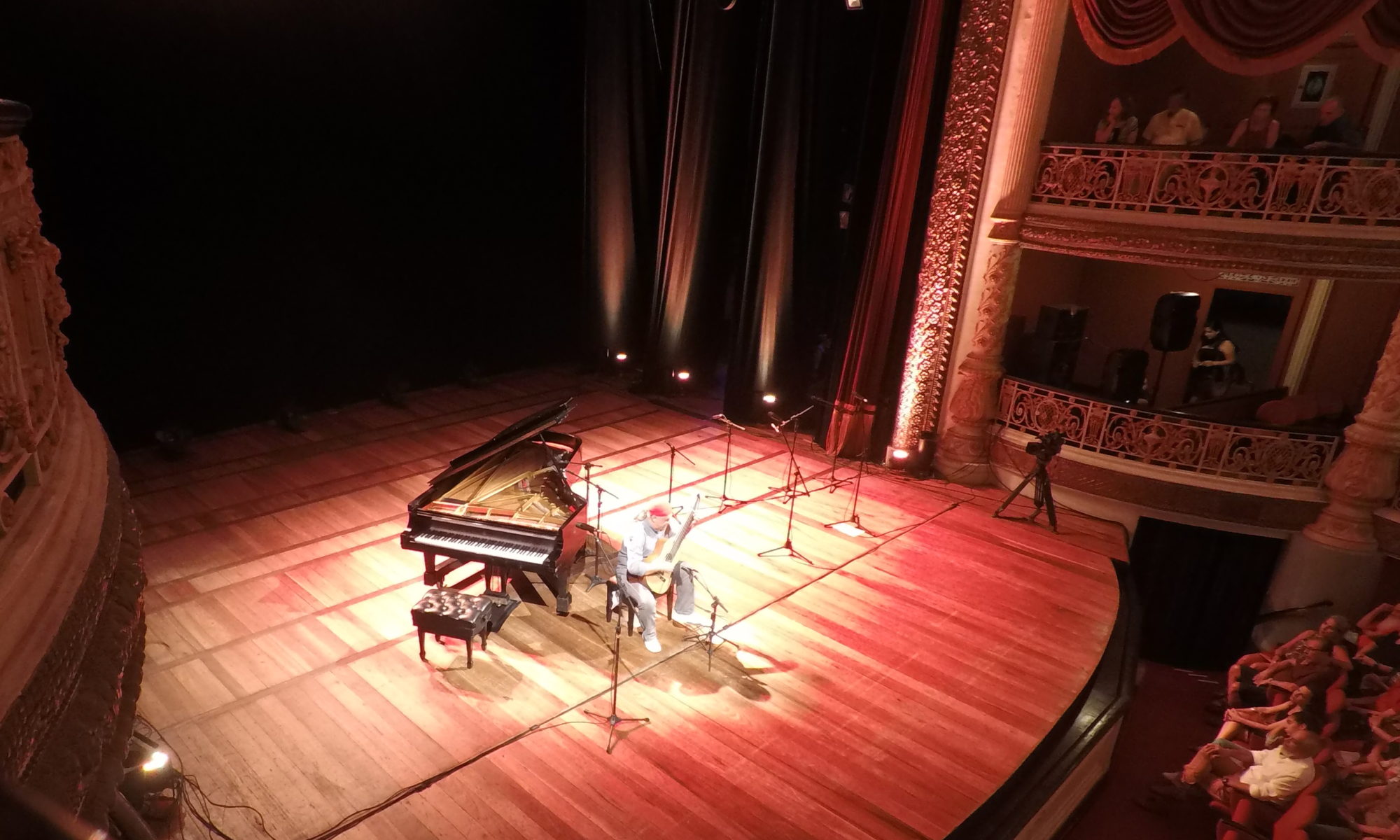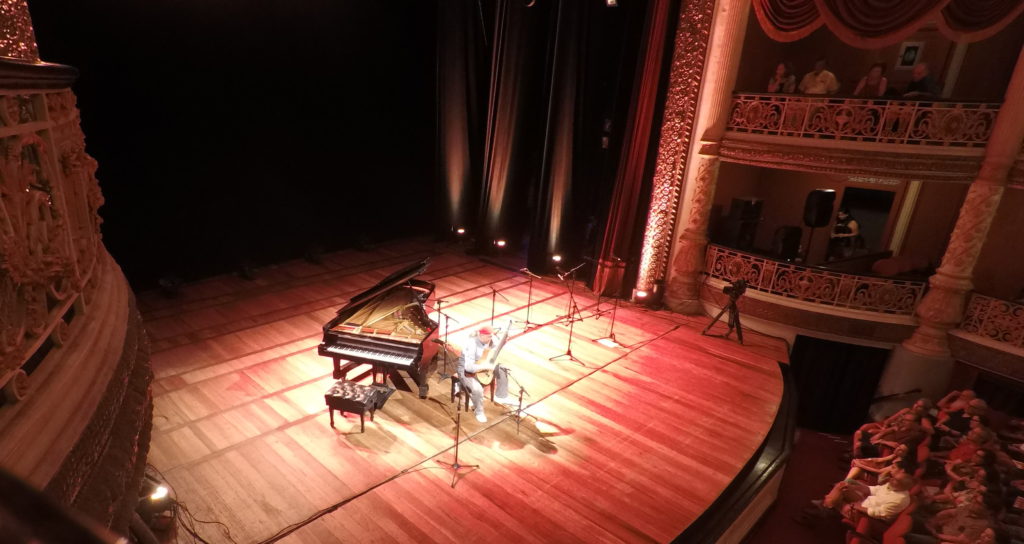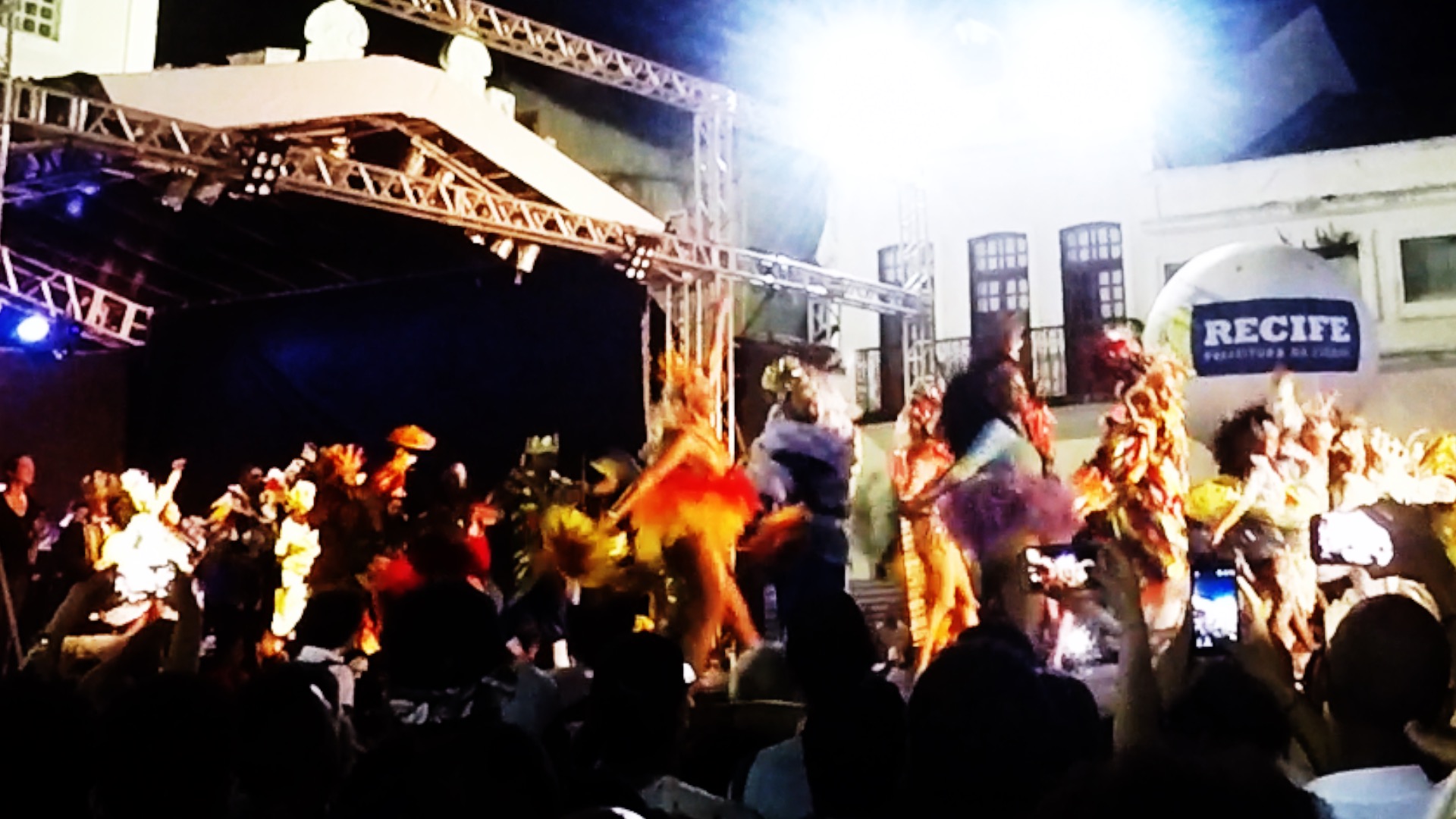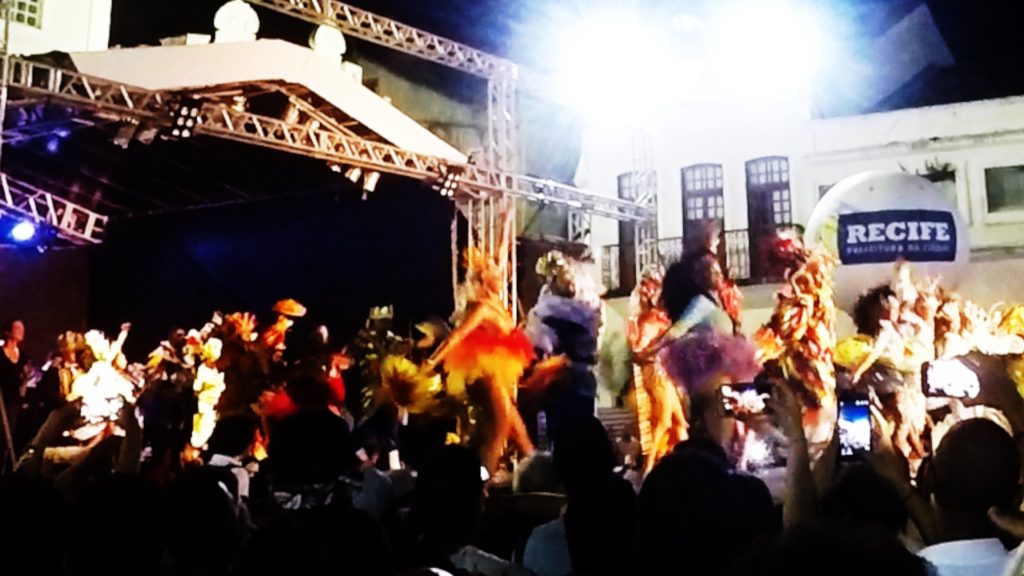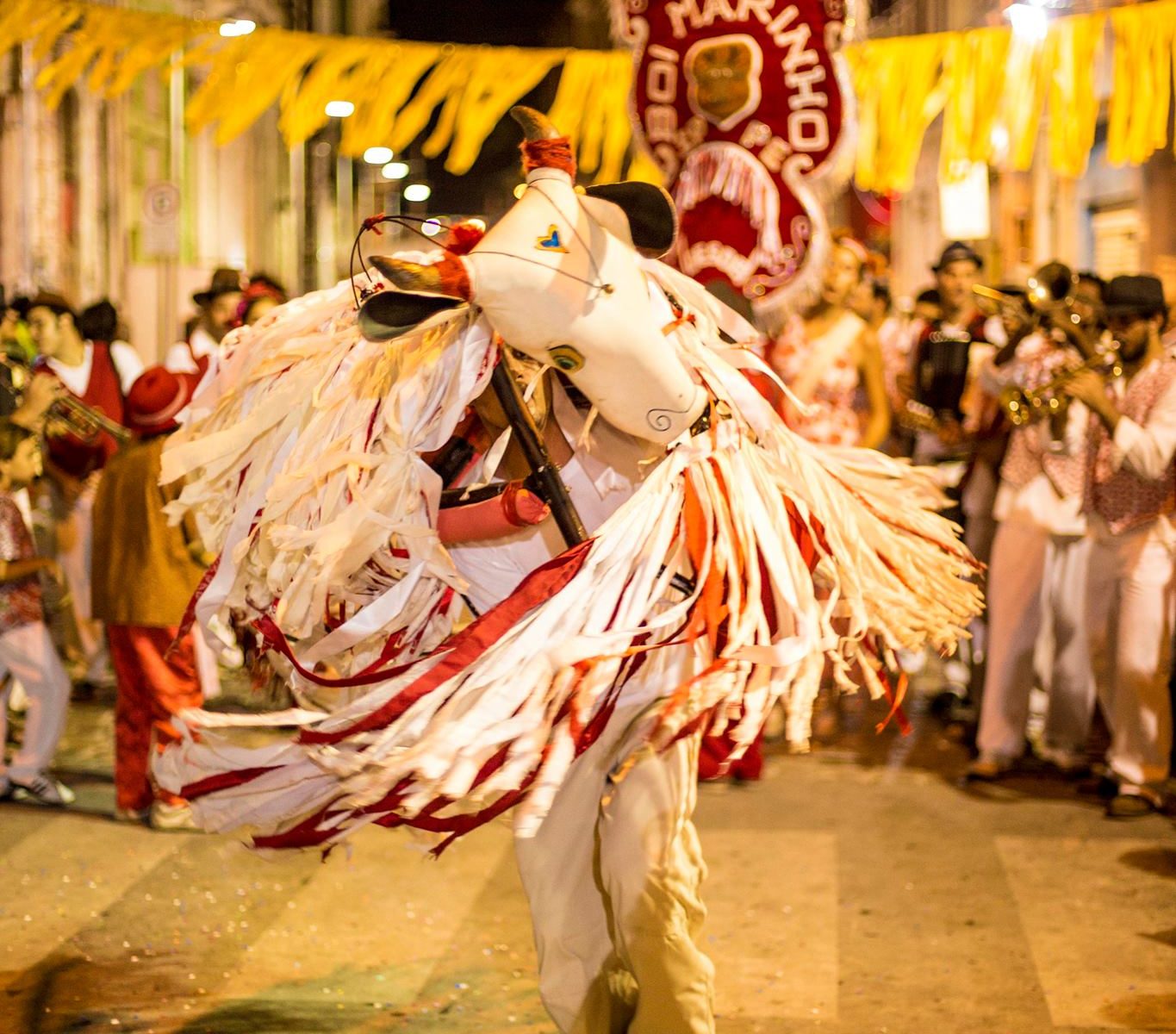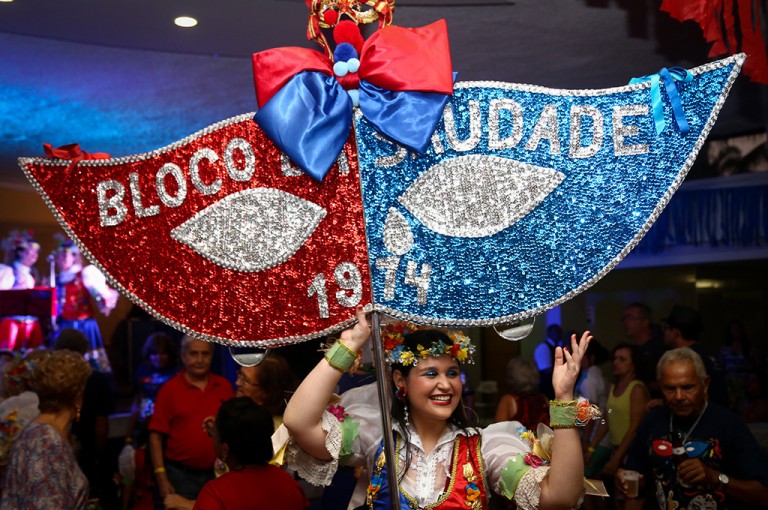Last night we went to the Bloco Escuta Levino gathering, which was essentially a huge dancing parade through the streets of Recife, from the Praça Maciel Pinheiro to Recife Antigo. Maestro Lessa’s orchestra played and the Guerreiros do Passo performed. The Guerreiros created a roda at the beginning of the parade and gave a taste of what frevo might have looked like in the 1940s, in full costume and dancing in the style of the time.
This was the first bloco I’ve been to where, despite the crowds, people made space to dance full out. We would walk for a bit, and then, once the mood hit us, we would “cair no passo” again, finding a space to kick and jump and swing. Every so often, a roda would form amidst the crowds, and some amazing dancers showed off their tricks, maneuvering their sombrinhas and some full-sized guarda-chuvas (umbrellas) under their legs, between their legs, behind their backs, and up above their heads.
Indeed, the umbrellas came in handy. It poured down rain, which only made the frevo dancing more fervent! We didn’t have umbrellas, so we were soaked…and happy.



